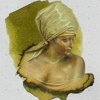Search the Community
Showing results for tags 'brick red'.
-
ink review : TACCIA Ukiyo-e - Syaraku - akasakura TACCIA is a Japanese stationery company, that - as far as I know - is now part of the Nakabayashi group. They offer high-quality fountain pens, inks, pen-rolls, notebooks, etc. More specifically, TACCIA produce a line of inks, inspired by...
- 15 replies
-
- taccia ukiyo-e
- syaraku
-
(and 3 more)
Tagged with:
-
Forgive my reviewing an ink that has been reviewed thoroughly before. This is my first review and I wanted to start with an ink that I have a lot of experience with. The written review was done in the Rhodia dotpad. The Titmouse sketch was done with J. Herbin's Terre de Feu and Cacao du Bresil in...
- 13 replies







